Abstract
Violations of strong stochastic transitivity in concurrent-chains choice were first reported by Navarick and Fantino. In a series of articles, Navarick and Fantino concluded that neither a unidimensional model capable of predicting exact choice probabilities nor a fixed-variable equivalence rule was possible for the concurrent-chains procedure. I show that when choice is modeled contextually (i.e., when preference for a schedule is affected by factors other than the schedule itself, e.g., aspects of the alternative schedule), a unidimensional, exact-choice probability model is possible that both predicts the intransitivities reported by Navarick and Fantino and provides a fixed-variable equivalence rule for the concurrent-chains procedure. The contextual model is an extension of the generalized matching law and violates a key assumption underlying traditional choice models—simple scalability—because of (a) schedule interdependence and (b) bias from procedural contingencies. Therefore, strong stochastic transitivity cannot be expected to hold. Contextual scalability is analyzed to reveal a hierarchy of context effects in choice. Navarick and Fantino's intransitivities can be satisfactorily explained by bias. If attribute sensitivity is context dependent, however, and if there are similarity structures among choice alternatives, the contextual model is shown to be able to predict violations of ordinal preference. Therefore, it may be possible to formulate a deterministic, general psychophysical model of choice as a behavioral alternative to probabilistic, multidimensional choice theories.
Keywords: transitivity, context of reinforcement, fixed-variable equivalence rule, simple scalability, choice, concurrent chains
Full text
PDF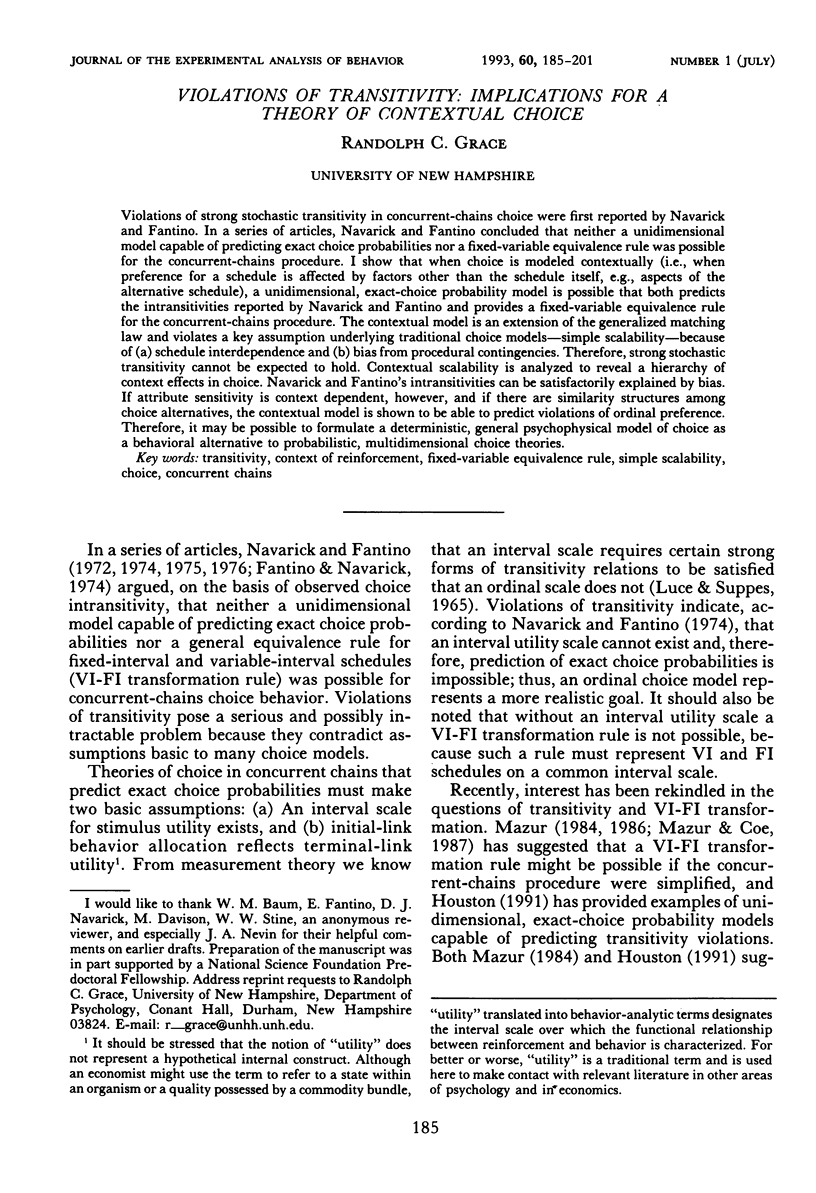
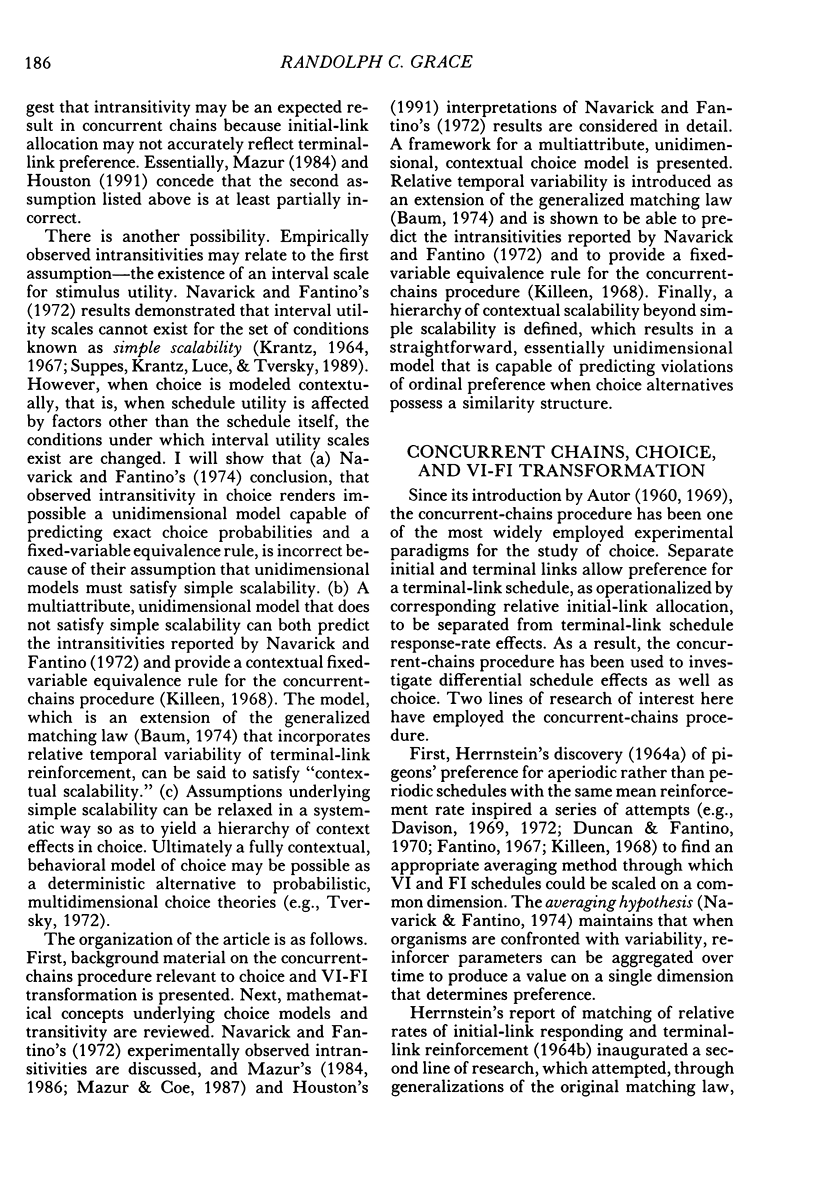
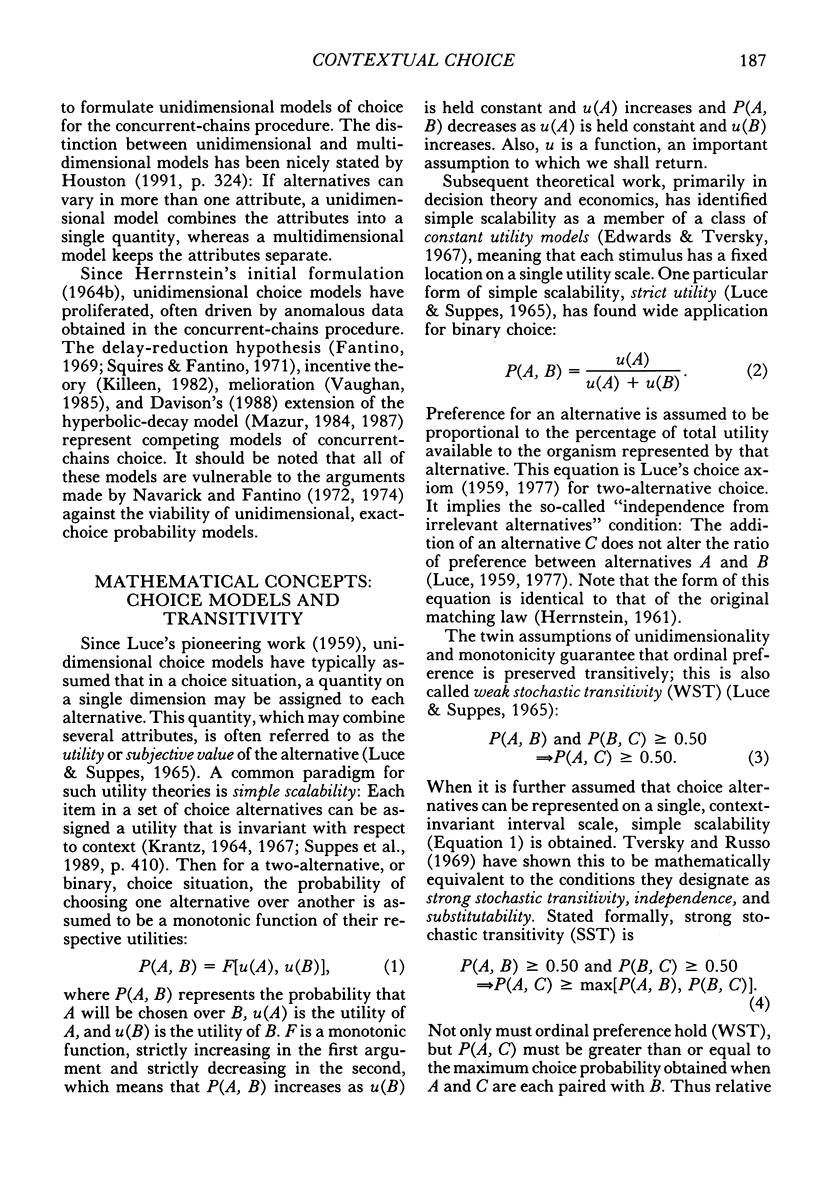
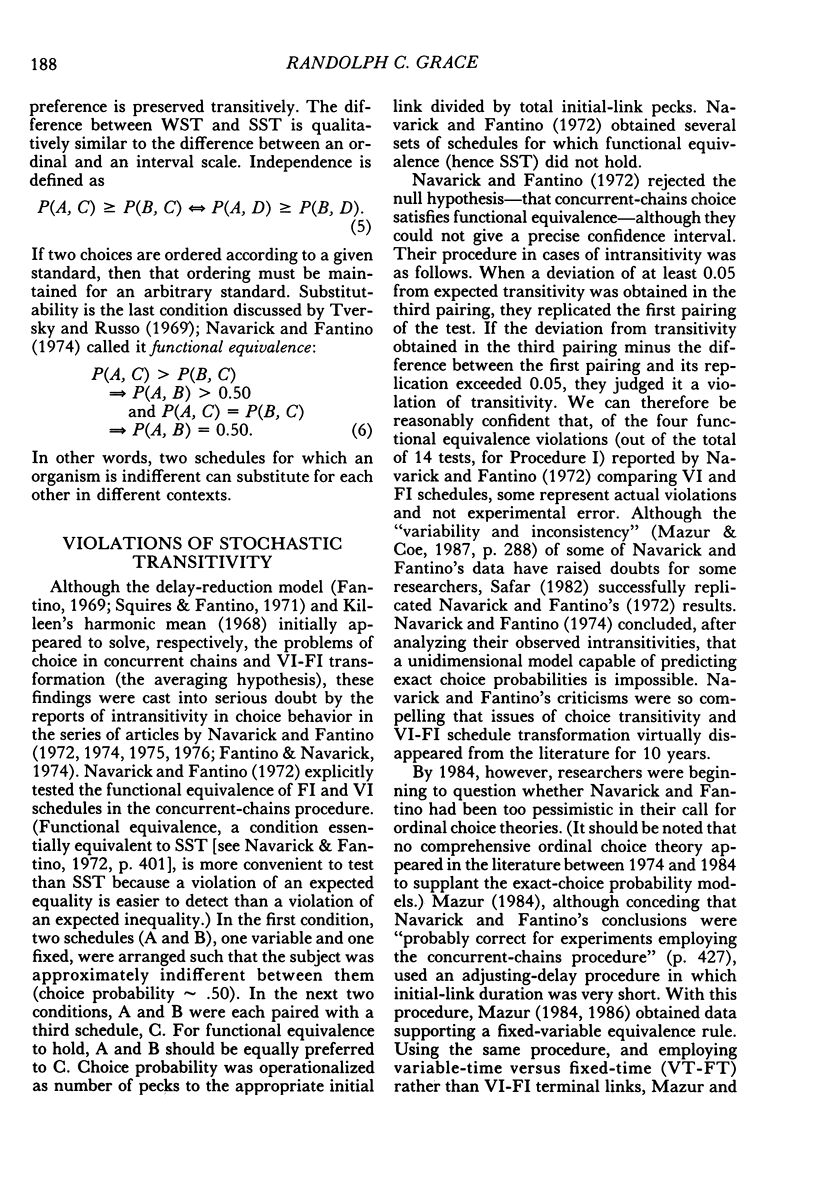
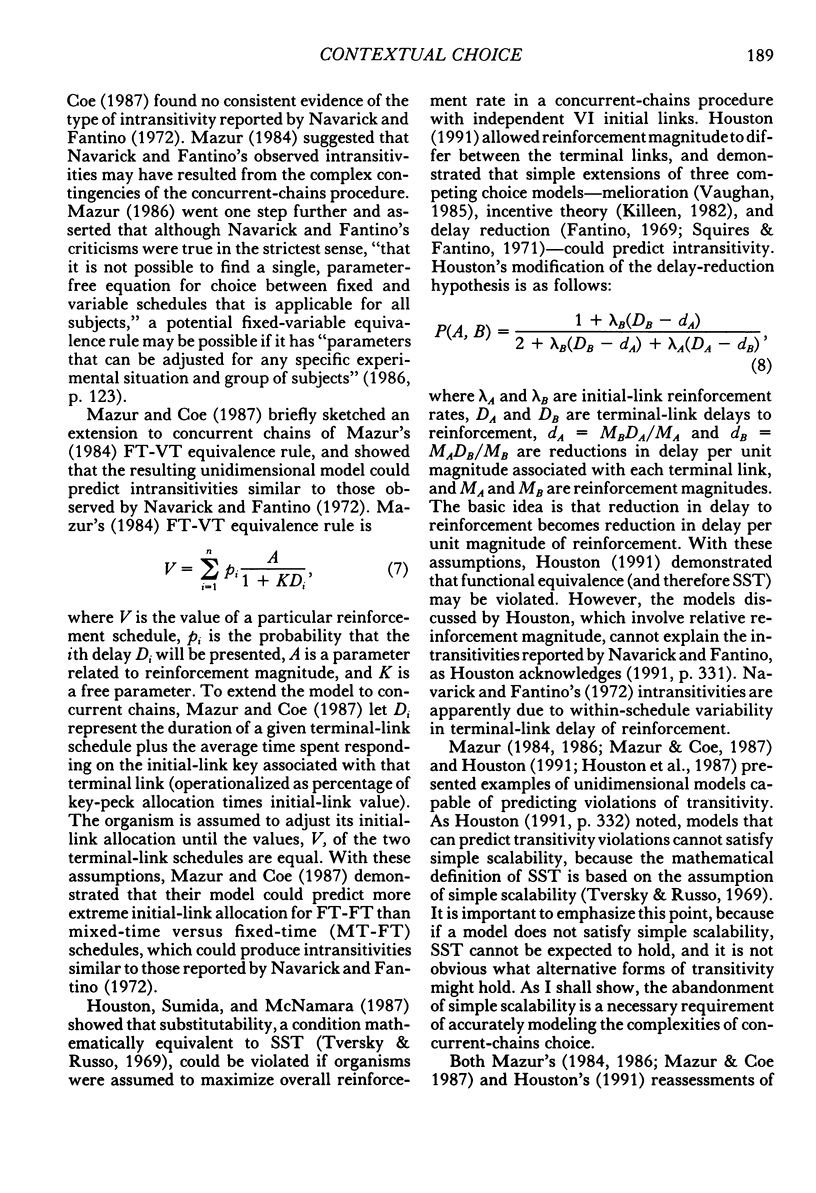
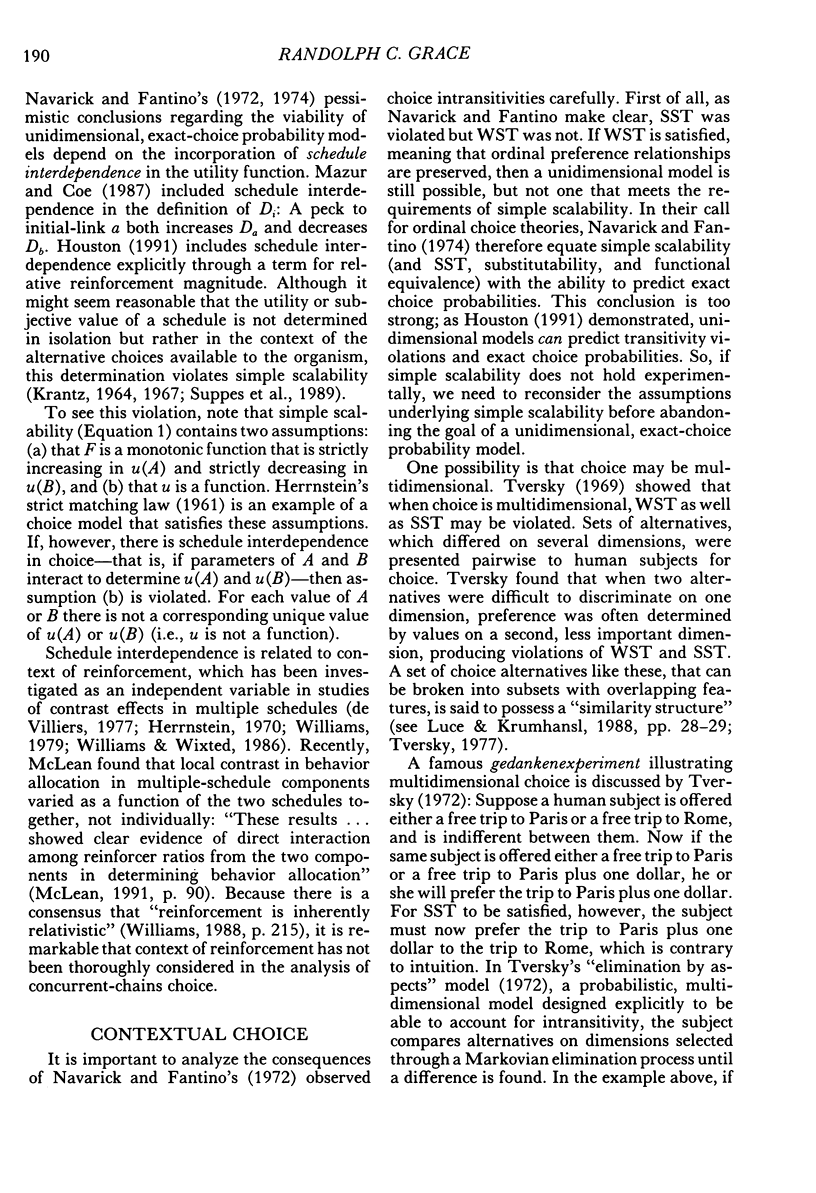
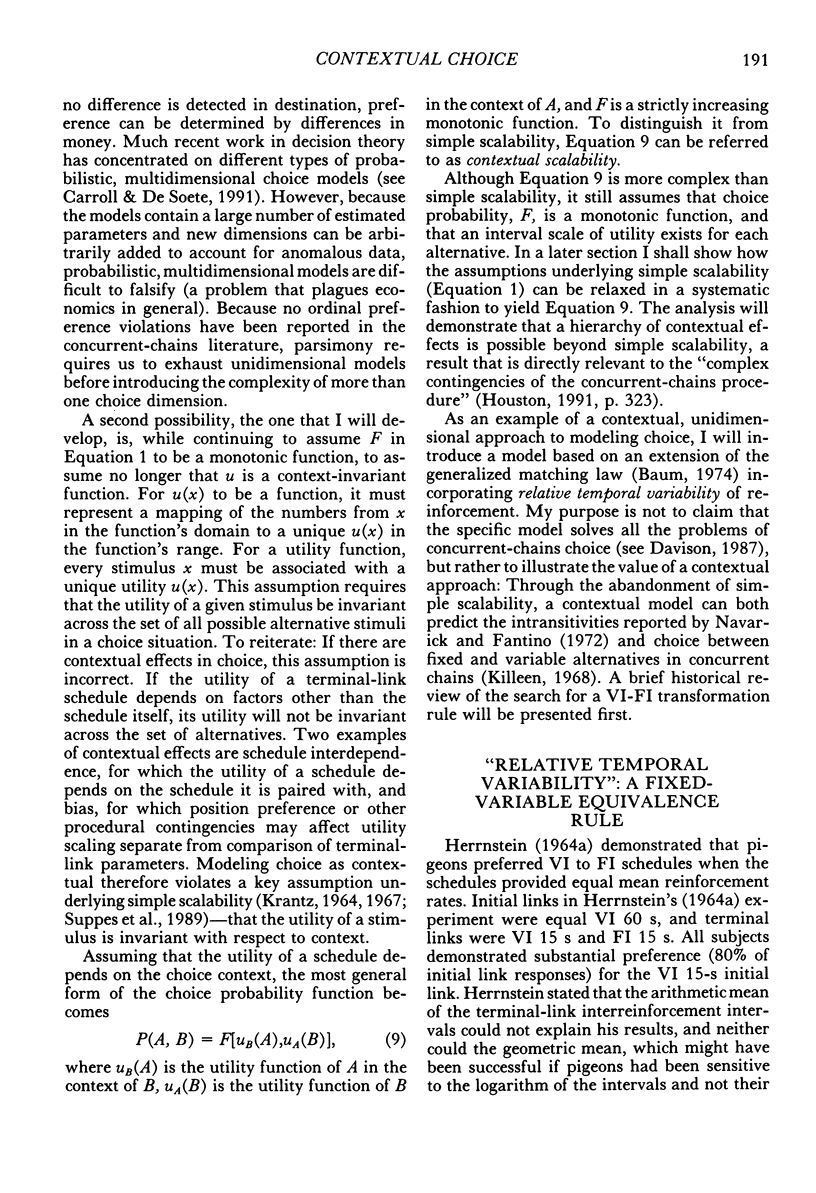
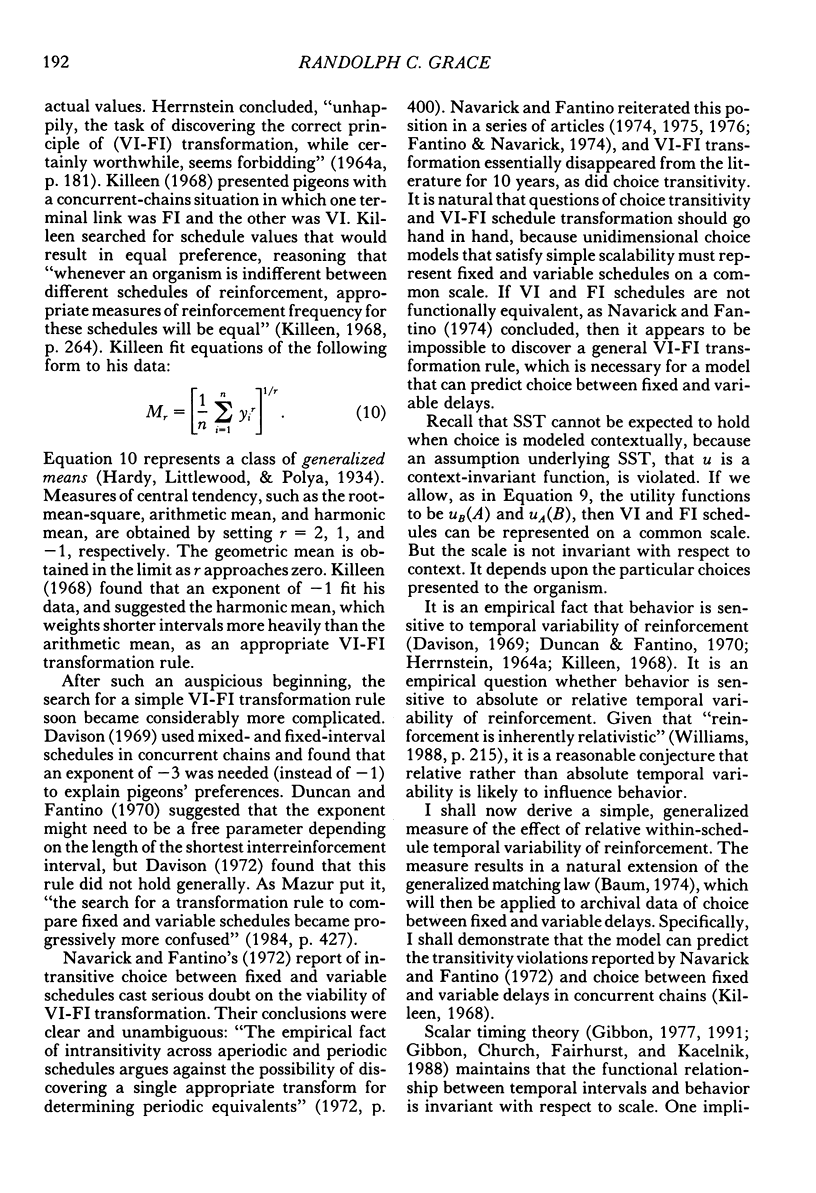
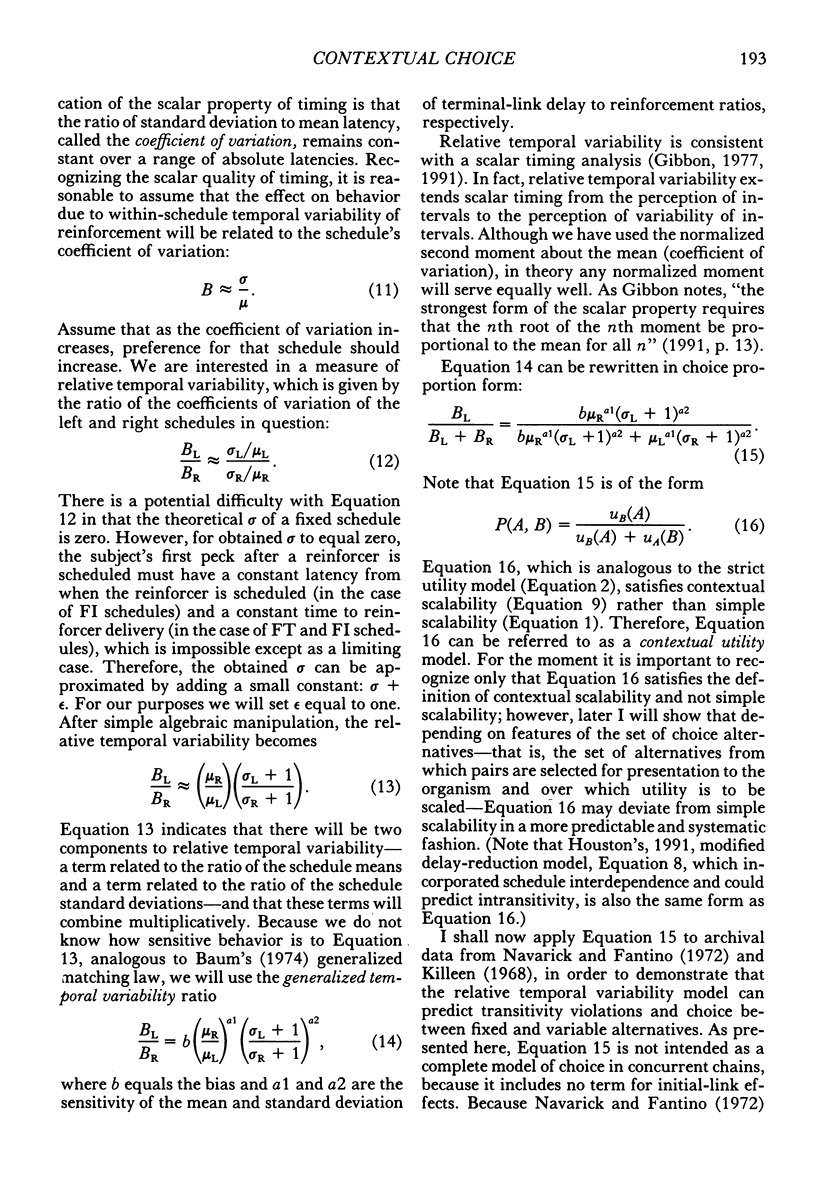
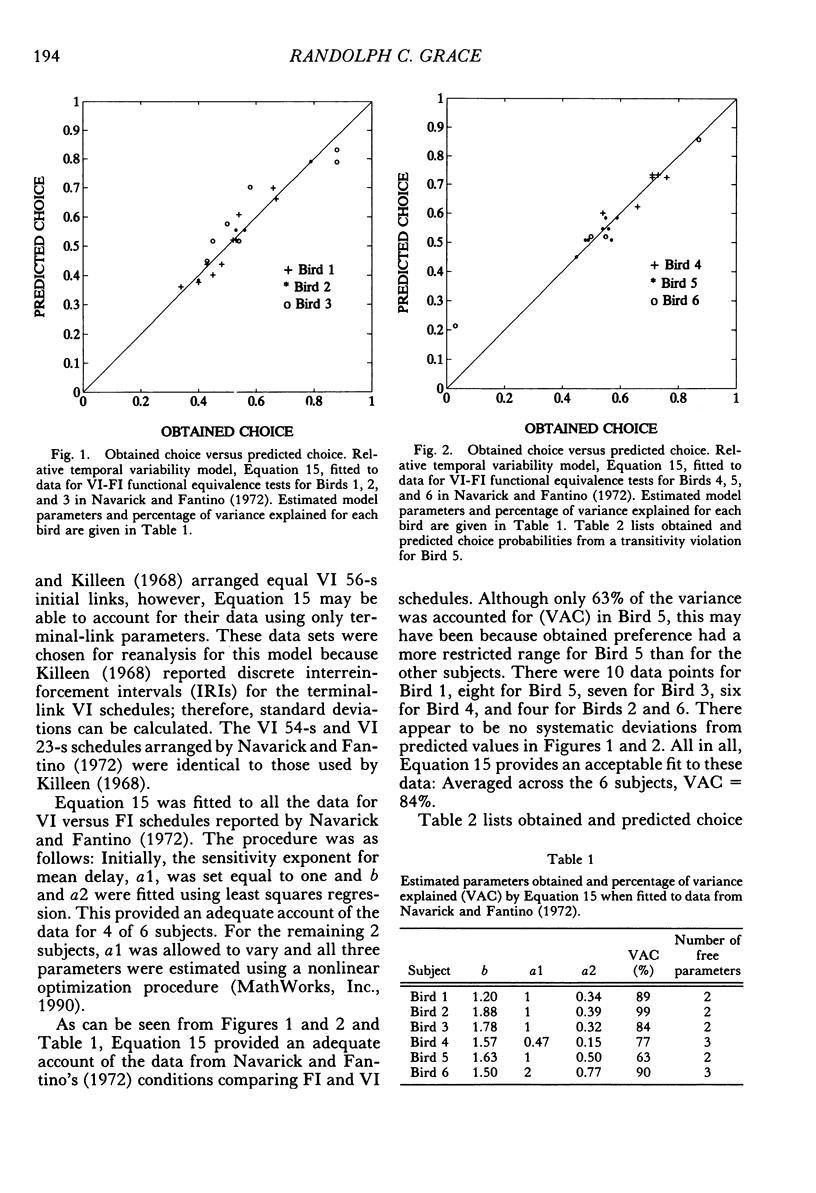
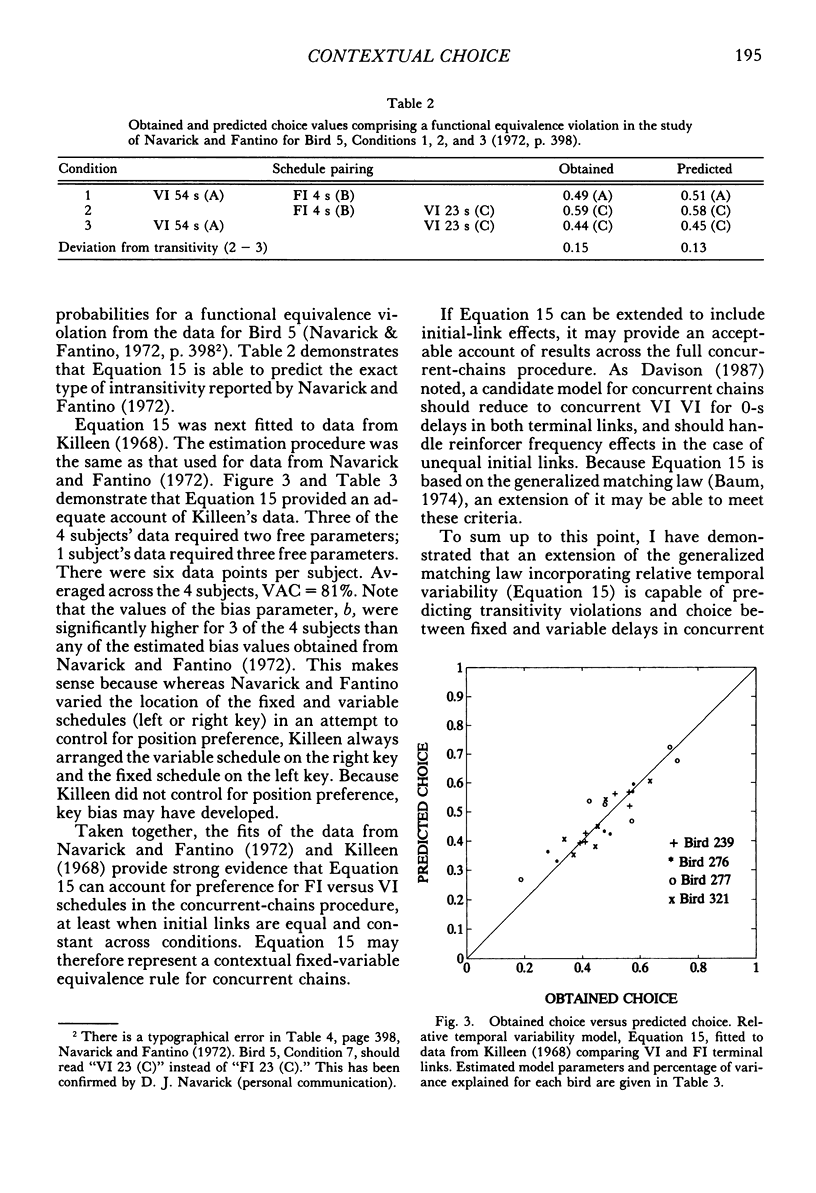
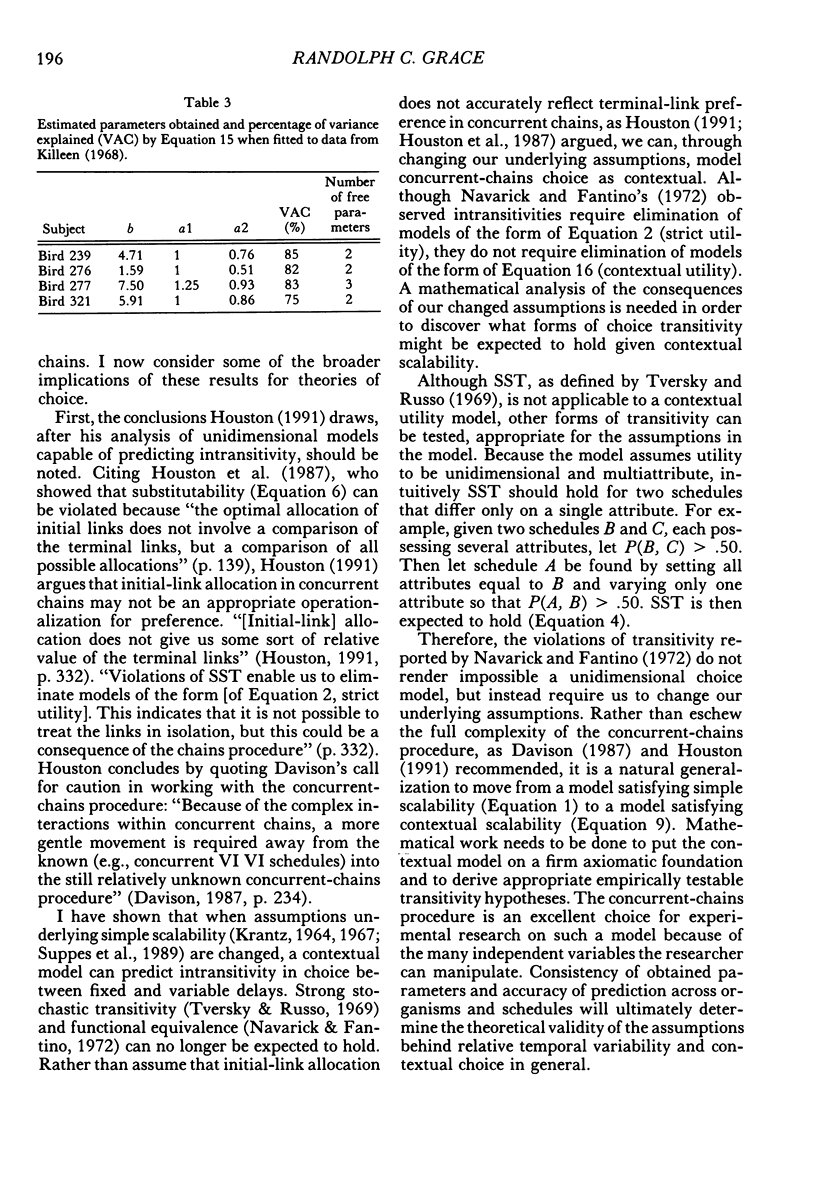
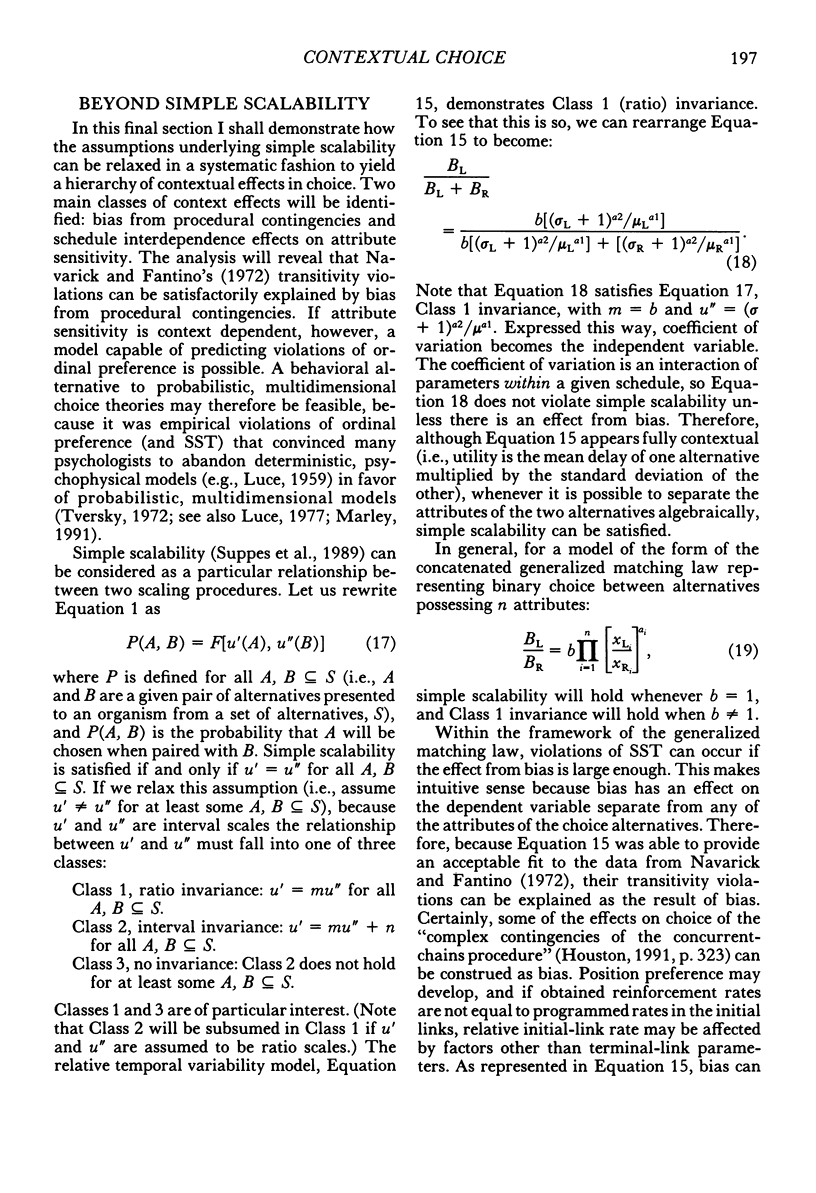
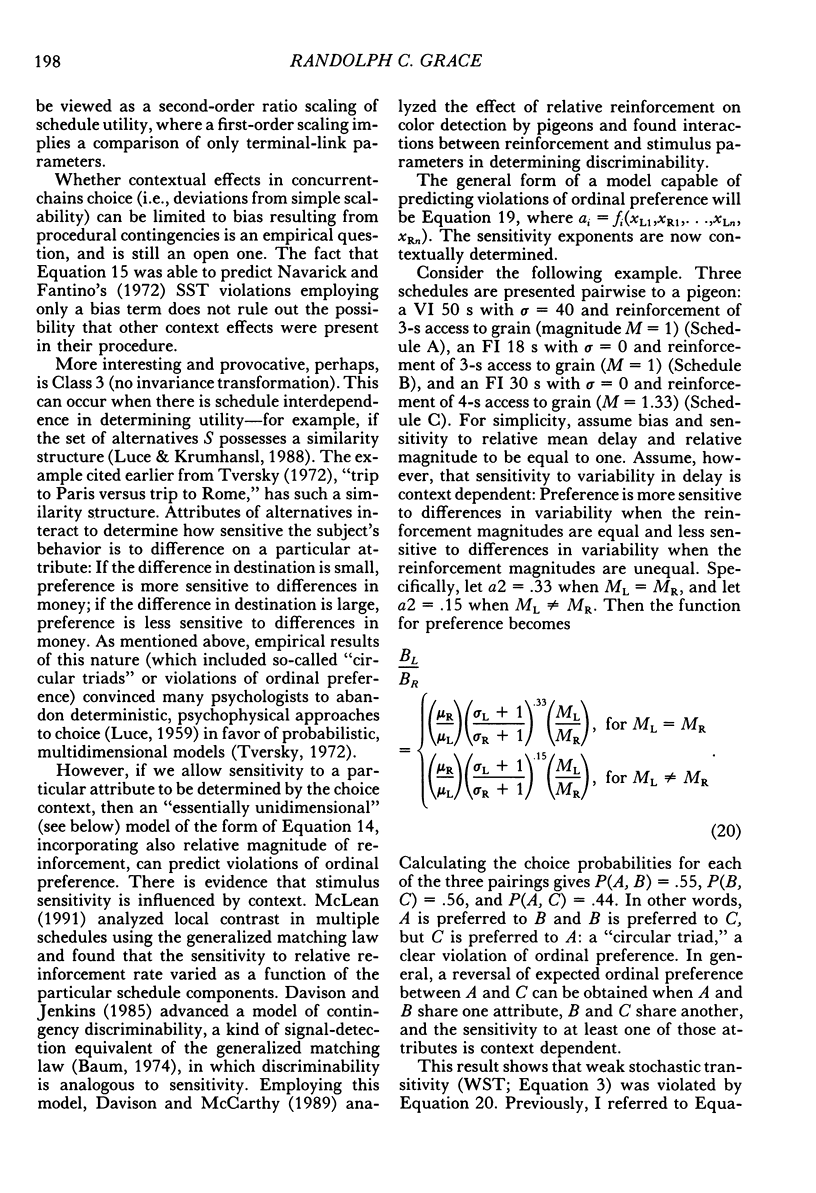
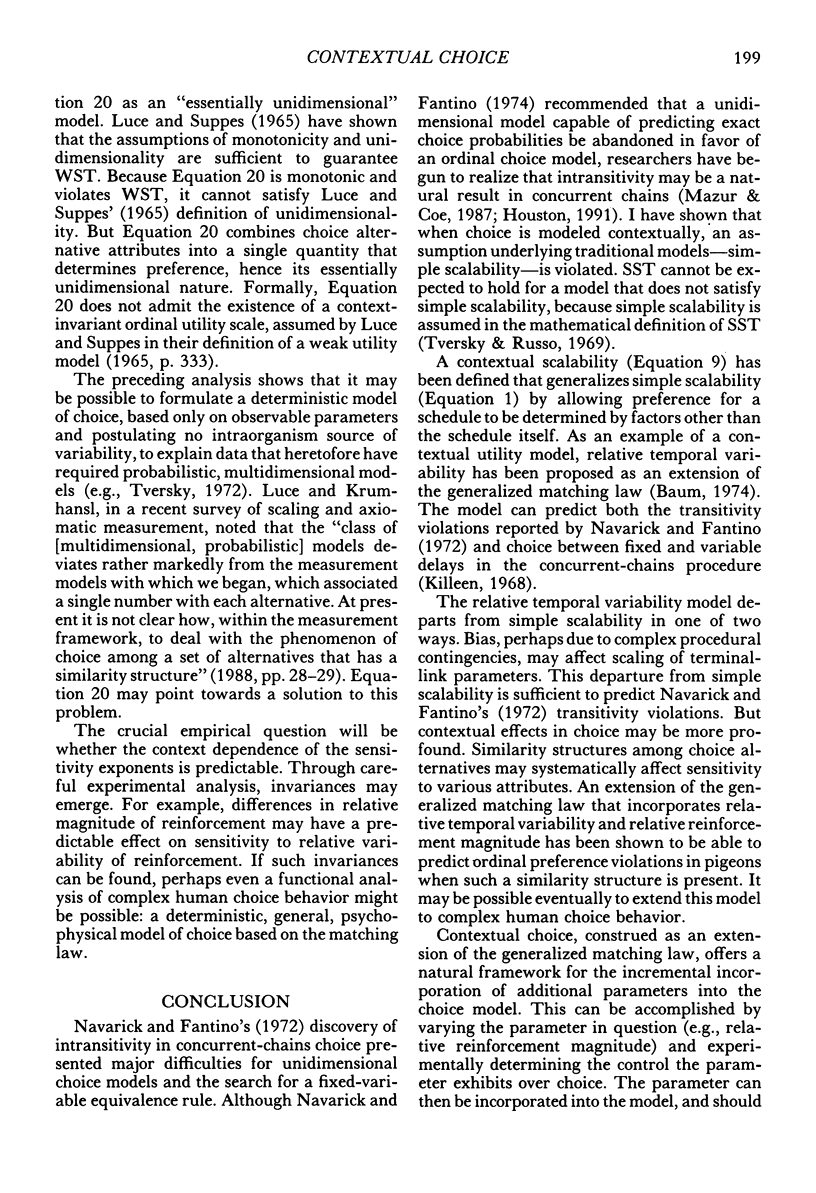
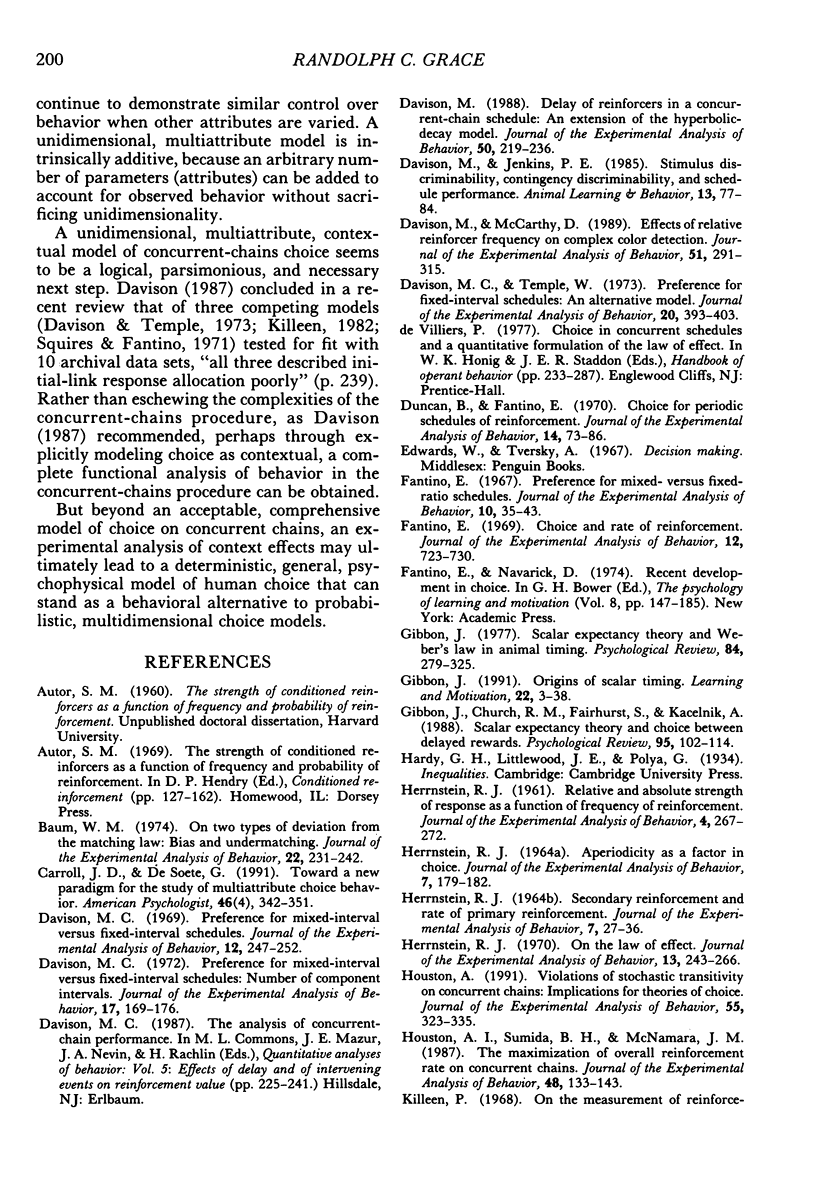
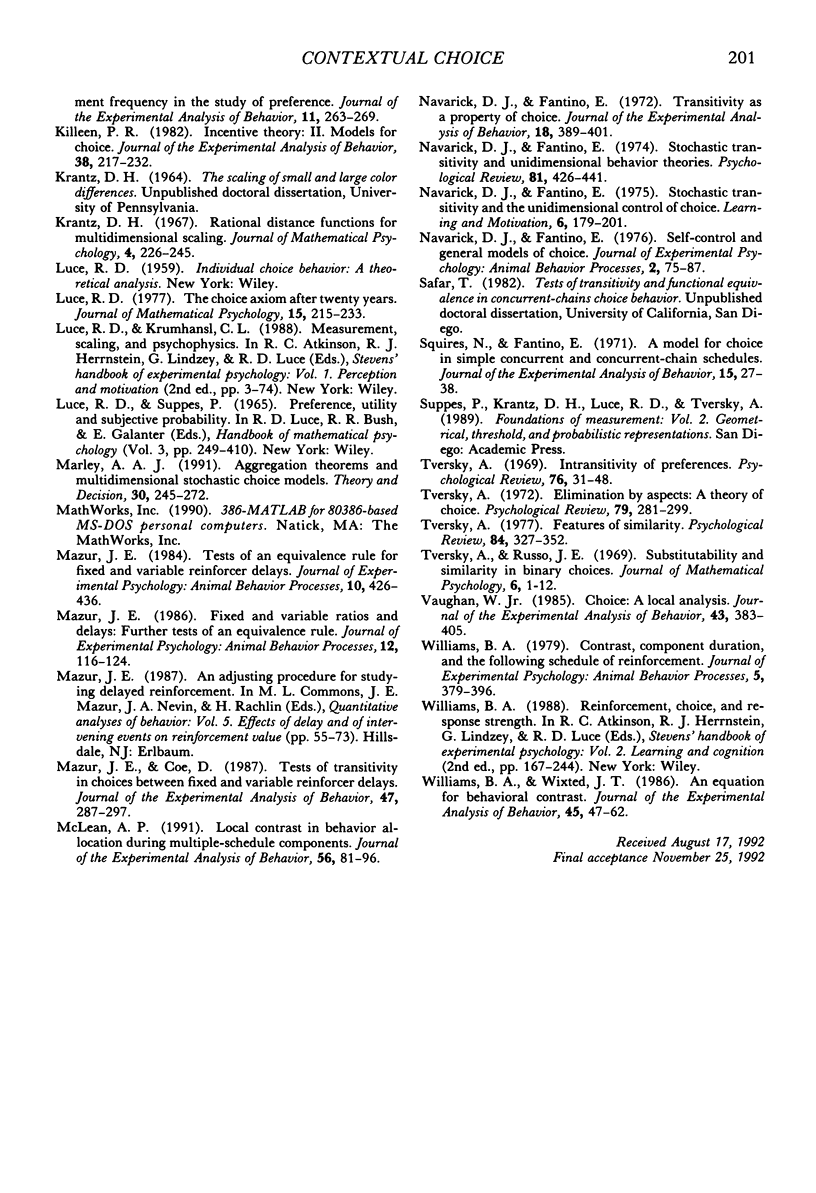
Selected References
These references are in PubMed. This may not be the complete list of references from this article.
- Baum W. M. On two types of deviation from the matching law: bias and undermatching. J Exp Anal Behav. 1974 Jul;22(1):231–242. doi: 10.1901/jeab.1974.22-231. [DOI] [PMC free article] [PubMed] [Google Scholar]
- Davison M. C. Preference for mixed-interval versus fixed-interval schedules. J Exp Anal Behav. 1969 Mar;12(2):247–252. doi: 10.1901/jeab.1969.12-247. [DOI] [PMC free article] [PubMed] [Google Scholar]
- Davison M. C. Preference for mixed-interval versus fixed-interval schedules: number of component intervals. J Exp Anal Behav. 1972 Mar;17(2):169–176. doi: 10.1901/jeab.1972.17-169. [DOI] [PMC free article] [PubMed] [Google Scholar]
- Davison M. C., Temple W. Preference for fixed-interval schedules: an alternative model. J Exp Anal Behav. 1973 Nov;20(3):393–403. doi: 10.1901/jeab.1973.20-393. [DOI] [PMC free article] [PubMed] [Google Scholar]
- Davison M. Delay of reinforcers in a concurrent-chain schedule: An extension of the hyperbolic-decay model. J Exp Anal Behav. 1988 Sep;50(2):219–236. doi: 10.1901/jeab.1988.50-219. [DOI] [PMC free article] [PubMed] [Google Scholar]
- Davison M., McCarthy D. Effects of relative reinforcer frequency on complex color detection. J Exp Anal Behav. 1989 May;51(3):291–315. doi: 10.1901/jeab.1989.51-291. [DOI] [PMC free article] [PubMed] [Google Scholar]
- Duncan B., Fantino E. Choice for periodic schedules of reinforcement. J Exp Anal Behav. 1970 Jul;14(1):73–86. doi: 10.1901/jeab.1970.14-73. [DOI] [PMC free article] [PubMed] [Google Scholar]
- Fantino E. Choice and rate of reinforcement. J Exp Anal Behav. 1969 Sep;12(5):723–730. doi: 10.1901/jeab.1969.12-723. [DOI] [PMC free article] [PubMed] [Google Scholar]
- Fantino E. Preference for mixed- versus fixed-ratio schedules. J Exp Anal Behav. 1967 Jan;10(1):35–43. doi: 10.1901/jeab.1967.10-35. [DOI] [PMC free article] [PubMed] [Google Scholar]
- Gibbon J., Church R. M., Fairhurst S., Kacelnik A. Scalar expectancy theory and choice between delayed rewards. Psychol Rev. 1988 Jan;95(1):102–114. doi: 10.1037/0033-295x.95.1.102. [DOI] [PubMed] [Google Scholar]
- HERRNSTEIN R. J. APERIODICITY AS A FACTOR IN CHOICE. J Exp Anal Behav. 1964 Mar;7:179–182. doi: 10.1901/jeab.1964.7-179. [DOI] [PMC free article] [PubMed] [Google Scholar]
- HERRNSTEIN R. J. Relative and absolute strength of response as a function of frequency of reinforcement. J Exp Anal Behav. 1961 Jul;4:267–272. doi: 10.1901/jeab.1961.4-267. [DOI] [PMC free article] [PubMed] [Google Scholar]
- HERRNSTEIN R. J. SECONDARY REINFORCEMENT AND RATE OF PRIMARY REINFORCEMENT. J Exp Anal Behav. 1964 Jan;7:27–36. doi: 10.1901/jeab.1964.7-27. [DOI] [PMC free article] [PubMed] [Google Scholar]
- Herrnstein R. J. On the law of effect. J Exp Anal Behav. 1970 Mar;13(2):243–266. doi: 10.1901/jeab.1970.13-243. [DOI] [PMC free article] [PubMed] [Google Scholar]
- Houston A. I., Sumida B. H., McNamara J. M. The maximization of overall reinforcement rate on concurrent chains. J Exp Anal Behav. 1987 Jul;48(1):133–143. doi: 10.1901/jeab.1987.48-133. [DOI] [PMC free article] [PubMed] [Google Scholar]
- Houston A. Violations of stochastic transitivity on concurrent chains: Implications for theories of choice. J Exp Anal Behav. 1991 May;55(3):323–335. doi: 10.1901/jeab.1991.55-323. [DOI] [PMC free article] [PubMed] [Google Scholar]
- Killeen P. R. Incentive theory: II. Models for choice. J Exp Anal Behav. 1982 Sep;38(2):217–232. doi: 10.1901/jeab.1982.38-217. [DOI] [PMC free article] [PubMed] [Google Scholar]
- Killeen P. On the measurement of reinforcement frequency in the study of preference. J Exp Anal Behav. 1968 May;11(3):263–269. doi: 10.1901/jeab.1968.11-263. [DOI] [PMC free article] [PubMed] [Google Scholar]
- Mazur J. E., Coe D. Tests of transitivity in choices between fixed and variable reinforcer delays. J Exp Anal Behav. 1987 May;47(3):287–297. doi: 10.1901/jeab.1987.47-287. [DOI] [PMC free article] [PubMed] [Google Scholar]
- Mazur J. E. Fixed and variable ratios and delays: further tests of an equivalence rule. J Exp Psychol Anim Behav Process. 1986 Apr;12(2):116–124. [PubMed] [Google Scholar]
- McLean A. P. Local contrast in behavior allocation during multiple-schedule components. J Exp Anal Behav. 1991 Jul;56(1):81–96. doi: 10.1901/jeab.1991.56-81. [DOI] [PMC free article] [PubMed] [Google Scholar]
- Navarick D. J., Fantino E. Transitivity as a property of choice. J Exp Anal Behav. 1972 Nov;18(3):389–401. doi: 10.1901/jeab.1972.18-389. [DOI] [PMC free article] [PubMed] [Google Scholar]
- Squires N., Fantino E. A model for choice in simple concurrent and concurrent-chains schedules. J Exp Anal Behav. 1971 Jan;15(1):27–38. doi: 10.1901/jeab.1971.15-27. [DOI] [PMC free article] [PubMed] [Google Scholar]
- Vaughan W. Choice: A local analysis. J Exp Anal Behav. 1985 May;43(3):383–405. doi: 10.1901/jeab.1985.43-383. [DOI] [PMC free article] [PubMed] [Google Scholar]
- Williams B. A. Contrast, component duration, and the following schedule of reinforcement. J Exp Psychol Anim Behav Process. 1979 Oct;5(4):379–396. doi: 10.1037//0097-7403.5.4.379. [DOI] [PubMed] [Google Scholar]
- Williams B. A., Wixted J. T. An equation for behavioral contrast. J Exp Anal Behav. 1986 Jan;45(1):47–62. doi: 10.1901/jeab.1986.45-47. [DOI] [PMC free article] [PubMed] [Google Scholar]


